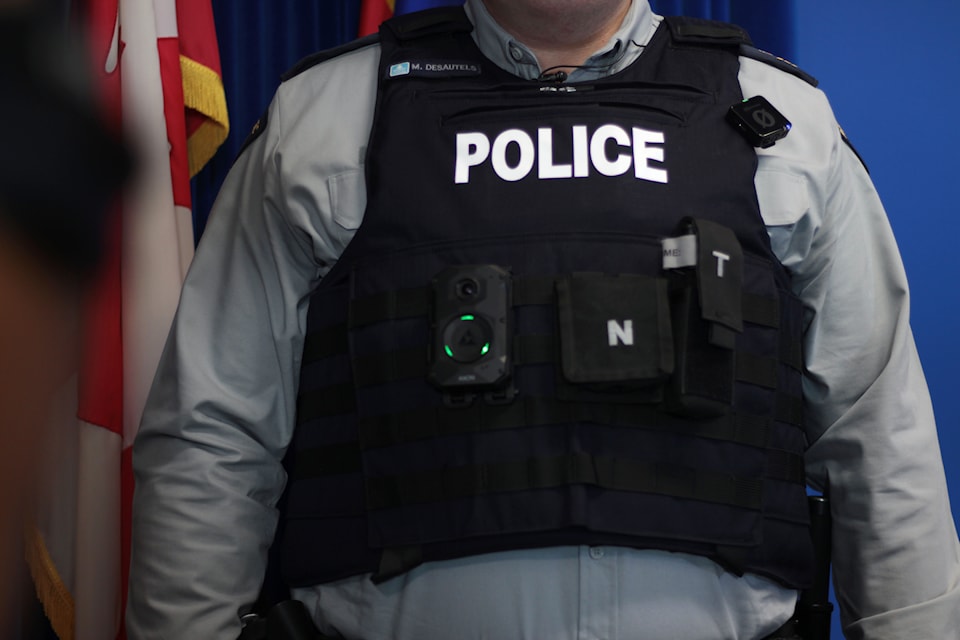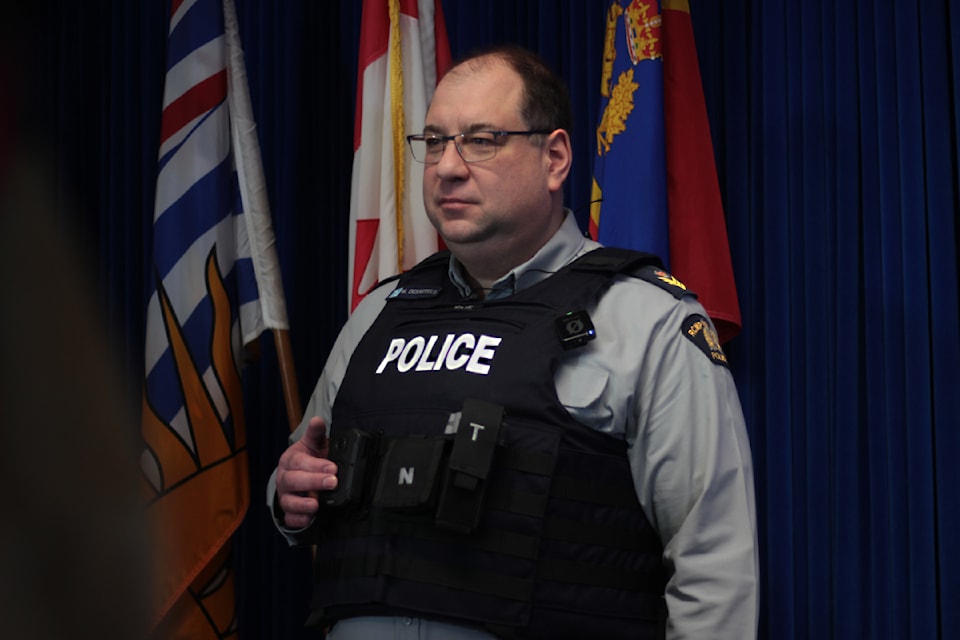Mission will be the first RCMP detachment in B.C. to roll out the use of body-worn cameras, beginning the week of Nov. 25.
It's the first of the six initial rollouts and will be followed by Ucluelet, Tofino (including Ahousaht), Prince George, Cranbrook and Kamloops, B.C. RCMP said during a news conference in Surrey Thursday (Nov. 21). In total in B.C., 3,000 officers in 144 detachments serving 150 municipalities will be using body-worn cameras.
RCMP did not provide specific dates yet for the first six rollouts, but said a release would go out from each detachment to inform the public.
B.C. RCMP commanding officer Dwayne McDonald said this represents the "largest and most ambitious rollout of body-worn cameras in the province."
He said the body-worn cameras is "expected to promote transparency, to strengthen accountability and to enhance officer and public safety."
"Basically, how this works is that when one of our members responds to a call for service and begins to engage with a person, the camera is activated and you will see frontline officers wearing the cameras in front of their vests on a regular basis."

Officers are expected to activate their body-worn camera before exiting their vehicle. Body-worn cameras are expected to be activated for crimes in progress, investigations, public disorder and protests, mental health calls, interactions with people in crisis and "to record information to support the performance of their duties."
McDonald said the while the cameras are worn, they are on standby, which means they're always buffering and capturing 30 seconds of video without audio. He said it's "essentially writing over that 30 seconds constantly," but once the camera is activated it attaches the 30 seconds without audio to the rest of the video.
"It's in the best interest of our officers to capture the video," McDonald said. "I think it's important to remember that in addition to calls from public for greater transparency ... and accountability for police, it's also in police's best interest to give the objective viewpoint of what's happening in interactions with the public."
In B.C., police agencies have watchdogs including, the Independent Investigations Office and the Office of the Police Complaint Commissioner. Nationally, there is the Civilian Review and Complaints Commission, which is an independent agency tasked with examining RCMP conduct.
The Independent Investigations Office, which investigates police's actions or inactions into incidents of death or serious harm, doesn't force an officer under investigation to be interviewed or submit notes, reports or data.
McDonald said the IIO would absolutely have access to the footage even if the officer chooses to not submit anything. He added those agencies will have access to unvetted – generally redacted – versions of the footage to conduct oversight investigations.
"That's where the transparency and accountability comes from."
He said he completely understands the "public's desire, and in some cases, curiosity to know right away what happens, but we do have to respect the privacy legislation."
The RCMP's federal headquarters announced the national rollout Nov. 14. Over the next nine months, 1,000 officers will start using the body-worn cameras each month.
Ninety per cent of the RCMP officers will be using the cameras in the next year, with the full rollout completed within 18 months.
The RCMP is not the first to rollout body-worn cameras in B.C.
The Delta Police Department, in the Lower Mainland, has been using the technology for more than two years. At a news conference in January 2024, the department anticipated it would have about 37 body-worn cameras in operation by the end of the year.

